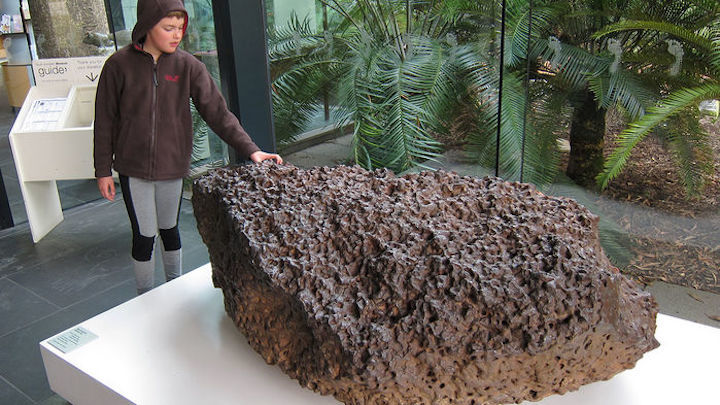7.03.2018

The 9980-kilogram meteorite, which crashed into Australia, contains tiny amounts of natural superconducting material, physicists have found.
SYDNEY OATS/ WIKIMEDIA COMMONS CC BY 2.0
-
LOS ANGELES—Meteorites sometimes contain naturally occurring superconductors, materials that conduct electricity without any resistance, a team of physicists has found. The result, reported here today at the annual March meeting of the American Physical Society, won’t revolutionize scientists’ understanding of the solar system, but it could raise hopes of finding a material that is a superconductor a room temperature—which could potentially lead to technological breakthroughs such as magnetically levitating trains.
“It sounds like they found something and isolated it,” says Johnpierre Paglione, a condensed matter physicist at the University of Maryland in College Park, whose team has been searching for natural superconductors in terrestrial minerals. “It’s neat.”
Conventional superconductors consist of simple metals, such as niobium, lead, or mercury, which become superconducting when cooled to below a characteristic “critical temperature” close to absolute zero—4.2 K in the case of mercury. In 1986, physicists discovered a family of copper-containing compounds that superconduct at temperatures as high as 134 K (-139°C)—a phenomenon known as high-temperature superconductivity whose origins remain one of the biggest mysteries in science. More recently, researchers have found a family of high-temperature iron-based superconductors, and there are myriad other exotic superconductors as well.

